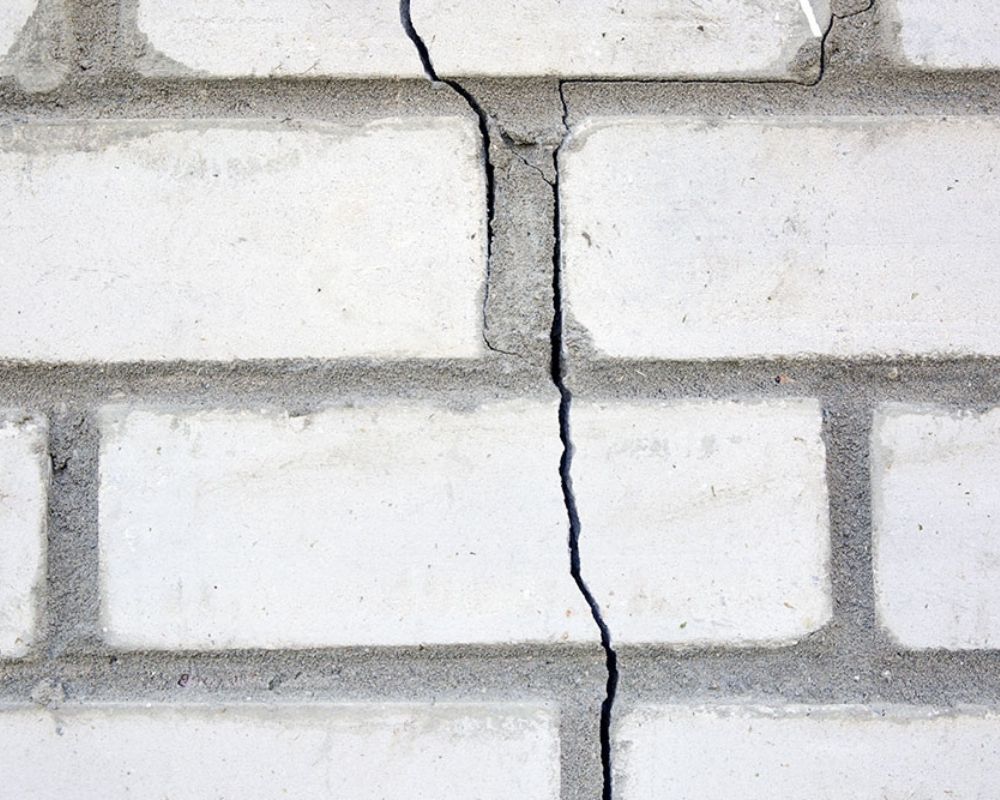If you’re concerned about cracks in your foundation, the materials may be the cause. Concrete masonry or poured concrete accounts for most of the foundations in the U.S. These materials are the best for foundations, but come at the cost of shifting, often resulting in cracks.
Vertical, thin cracks are not usually much of anything to worry about. However, stairstep splits or horizontal fractures that keep widening are issues of concern. If you need to know what is causing your foundation cracks, how to determine what types of cracks you have, and how to keep these cracks from becoming a bigger problem, read on to learn more.
Sometimes there are less common reasons for cracks, but in most cases, they involve some common reasons that we will take a look at, based on advice from Homebuyer’s School:
Elastic Soil Settlement and Cracks in Your Foundation
Elastic soil is often considered responsible for most foundation cracks, often known as settling. Creaking sounds that we hear and attribute to settling are a typical indicator of foundation issues. The soil is the reason behind all this activity.
A simple explanation is that houses cause a lot of pressure on the ground. Changes in the temperature, as well as rain and snow, cause the soil under the structure to expand and contract. Different areas of the house might settle at different times.
Another factor is that the soil under a single house may include different types. One type of soil that often causes more dramatic settling is clay, which dries and cracks extensively during dry conditions.
A helpful bit of news is that most cracks that happen because of elastic soil are not serious. Because there is nothing that homeowners can do about elastic soil, knowing that there is usually no action required is a welcome relief.
Age-Related Reasons Behind Foundation Cracks
The older a home’s foundation, the more likely there will be issues like cracks. Sometimes the issue with the foundation relates to the era that the construction originates in. For example, foundations dating to the 1920s do not usually contain some standard materials considered essential now.
Unfortunately, if age is most of the reason for issues with your home’s foundation, there are limited options aside from rebuilding. The good news is that you will have a better idea of how to proceed once you know what your realistic options are.
How Tree Roots and Poor Drainage Affect Foundations
A common myth about cracks in your foundation is that tree roots push foundations up, but the threat from tree roots is different. Soil often compacts because of the transpiration process, which causes foundations to settle in a downward motion.
Trees close to your home aren’t always and may never become a problem. However, a proactive approach will help head off any problems before they start.
Although tree roots may or may not be an issue, drainage is always an important issue for consideration. Poor drainage, as well as issues like leaks in your plumbing, can cause damaging amounts of water to accumulate around your foundation.
Water can ruin any material when given enough time, as this life-giving substance is also a solvent. Standing water may eventually lead to expensive problems requiring your attention.
Identifying the Cause of Cracks by the Type of Cracks in Your Foundation
Identifying the type of cracks that you have is the first step to fixing foundation problems. The type of cracks present in your foundation can determine whether you need to monitor the situation or can await expensive repairs.
The crack width is one indicator of how serious the problem is, with wider cracks being signs of a more serious problem. Inwardly bowing walls on the interior and exterior in different places are also signs of trouble.
Vertical cracks are usually the least serious cracks in a foundation. The most typical cause is concrete shrinkage, a process that happens over time and isn’t usually a cause for alarm. Water may penetrate these cracks, making monitoring helpful.
Horizontal cracks are sometimes serious but often have causes that are unrelated to your foundation. Cracks near a window or door may indicate settling materials, while basement ceiling cracks often relate to freezing ground near the basement level. Like vertical cracks, these may require more monitoring than quick action.
Stairstep cracks are the most serious of cracks and most likely to require repair. These cracks occur in exterior walls or the foundation’s brickwork. The cracks follow a pattern resembling a staircase and may cause the walls to bow inward.
Differential settlement is one cause of these types of cracks. Hydrostatic pressure from saturated soil is a common cause when these cracks occur in basements. Hot or cold expansion sometimes contributes to these cracks, but this is not a common occurrence.
In most cases, it is not worth taking a chance that temperature-related expansion is the cause. Stairstep cracks, in general, should be treated as serious and get attention sooner.
Preventative Maintenance and When to Seek Help
Checking your home’s foundation regularly will help you tackle problems before they spiral out of control. Keep an eye out for cracks, sagging or bulging floors, or standing water in unusual spots outside. The sooner you take care of cracks in your foundation, the better, so you will want to get in touch with us so we can help you through resolving the issue.

